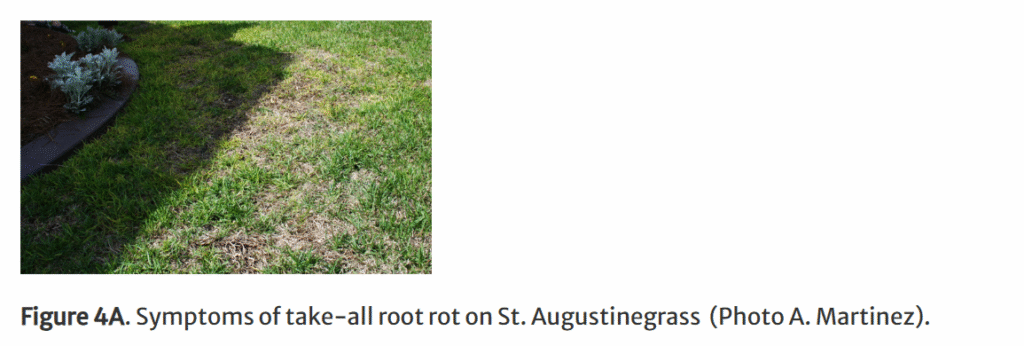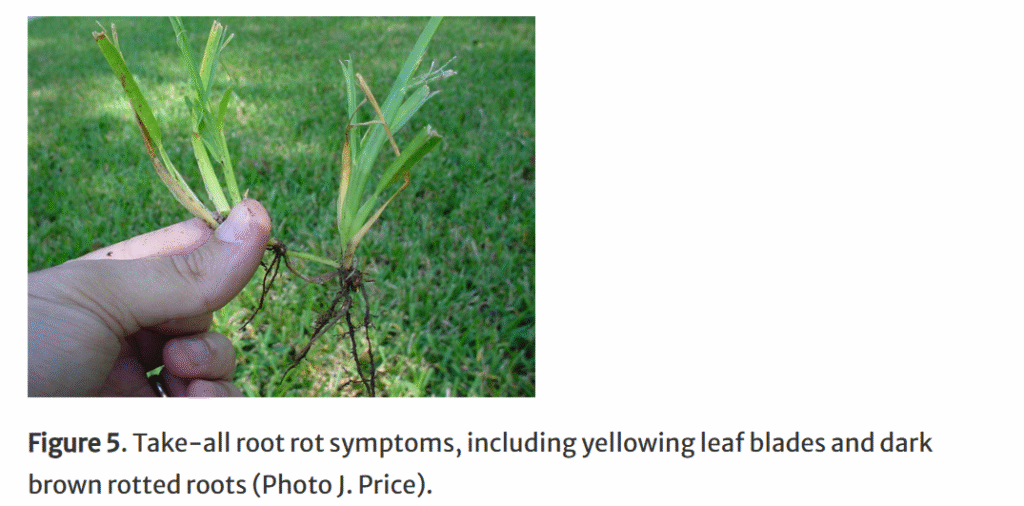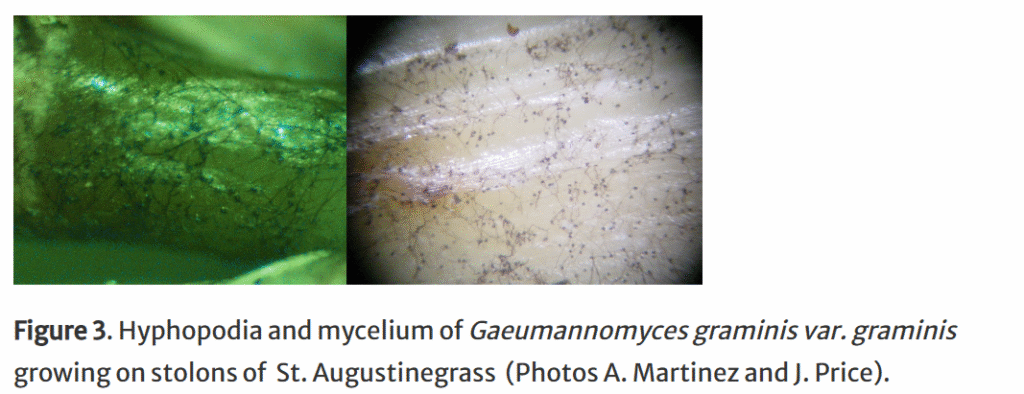I have been getting a few calls about dead spots in centipede and St. Augustine lawns and alot of times the cause is Take-all root rot. Take-all root rot (TARR) is a fungal disease in warm-season grasses such as bermudagrass and St. Augustinegrass. Likewise, the fungus that causes this disease is Gaeumannomyces graminis var. graminis. TARR favors hot temperatures of around 77 to 90 degrees Fahrenheit, slow-draining soil, and a pH above 6.5. Other factors that encourage the disease include pathogens and environmental stress. Environmental stresses include herbicide injury, shade, imbalanced soil fertility, and soil compaction. Initial symptoms of the disease include yellow and odd-shaped patches of grass that can be up to two feet wide. The fungus begins its infection in the lower leaves of the grass and then spreads to the upper leaves. However, often after symptoms are observed on the foliage of the grass, the roots of the grass will be either discolored or rotted. Furthermore, this disease can result in dead patches of grass throughout the yard.



In order to prevent TARR include ensuring healthy root development through proper fertilization, improving poorly drained areas, and reducing the thatch layer if it becomes more than a half-inch thick. Mowing at the correct height of 1 to 2 inches for bermudagrass and 2 ½ to 3 ½ inches for St. Augustinegrass can help to reduce the thatch layer in the grass. Likewise, take a soil sample of the yard and apply fertilizer based on the soil test recommendations, as too much nitrogen can leave the grass susceptible to a TARR disease epidemic. If the lawn is irrigated, then irrigate the yard infrequently but ensure the water reaches 6 or 8 inches deep, as frequent irrigation can increase the chances of TARR. Unfortunately, there are no TARR-resistant varieties available for any warm-season grasses. The control methods for TARR include applying fungicides and implementing cultural practices such as maintaining the soil pH at a somewhat acidic to neutral level. According to the UGA Pest Management Handbook control options for TARR include fungicides such as azoxystrobin, myclobutanil, propiconazole, and thiophanate-methyl. These fungicides are most effective as a preventive action before any symptoms of TARR occur and should be applied during the spring or fall. When applying fungicides on a lawn, apply ¼ to ½ inch of water immediately to ensure the fungicide reaches the root zone. An extensive management option for TARR is to remove grasses like St. Augustinegrass and replace them with a warm-season grass fit for your geographic location. Likewise, before using chemicals, read the label to protect yourself and ensure the proper amount of fungicide is applied.
For more information concerning chemical treatments, consult your local county extension agent.
This article was written with the help of Owen Russell, he interned with the Colquitt County Extension office during the summer of 2025.